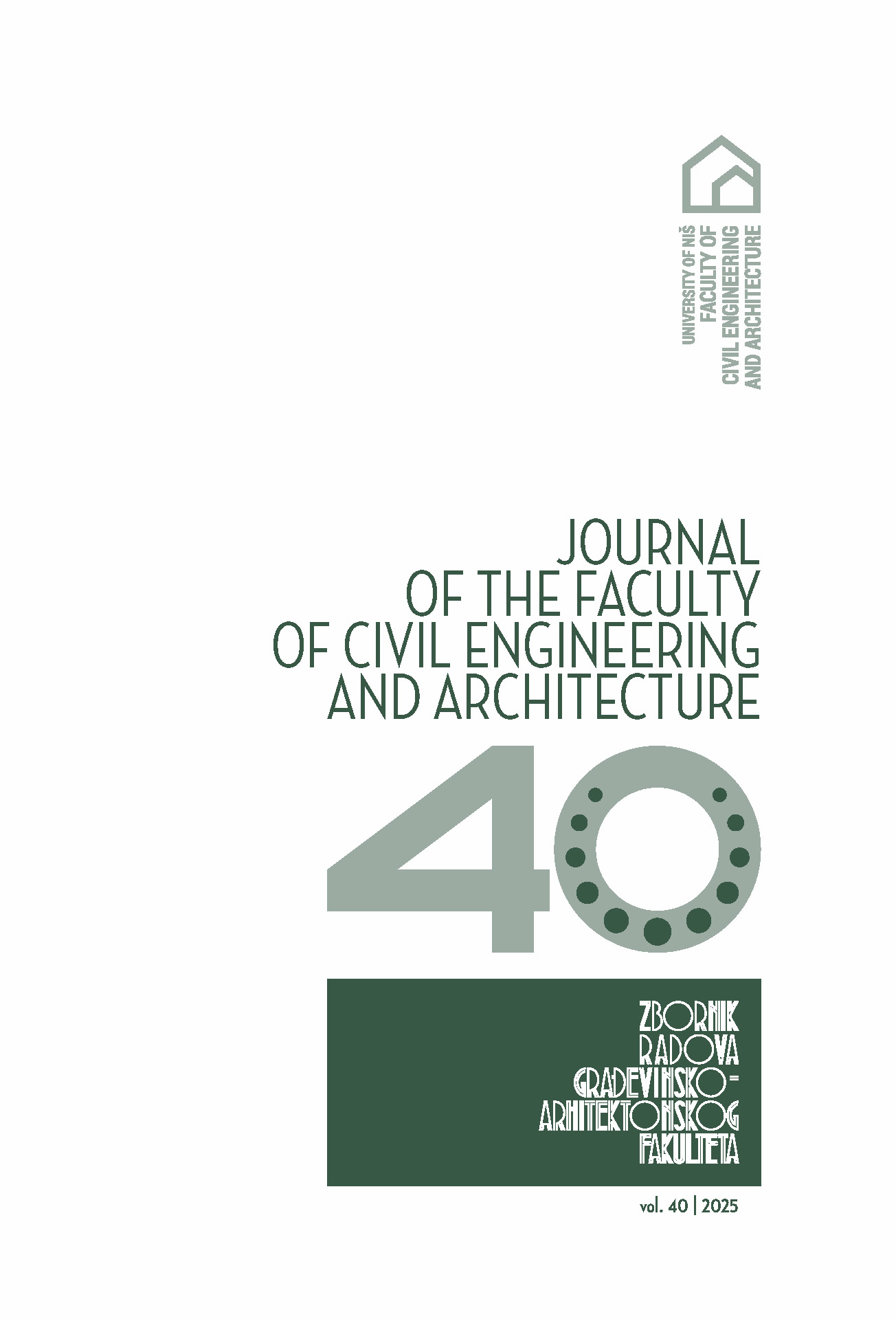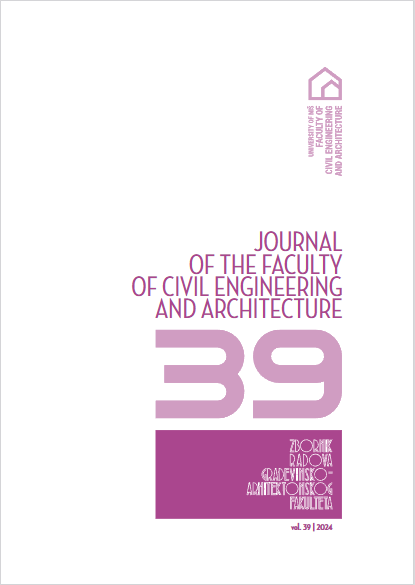PROBABILISTIC ESTIMATION OF LIFE-CYCLE CHLORIDE-INDUCED CORROSION
Coastal bridges constitute critical components for the transportation in offshore areas, and thus their serviceability and safety against hazard such as earthquakes need to be ensured in a life-cycle perspective. However, coastal bridges are confronted with significant corrosion that results in degradation effects mainly on concrete piers. This can...
By Jiabin Liu, Heng Mei, Andrija Zorić
ANALYSIS OF SURFACE DEFORMATIONS DURING EXCAVATION OF A SMALL OVERBURDEN TUNNEL IN WEAK ROCK MASSES
Excavation of tunnels with a small overburden inevitably implies surface settlements, especially when they are carried out in soft soil or weak rock masses. Subsidence becomes a critical aspect when the construction of tunnels is realized in narrower urban areas, directly below occupied residential buildings. Taking as an example the Kobilja Glava ...
By Ekrem Bektašević, Satko Filipović, Kemal Gutić, Džemal Hodžić, Namik Musa
CHALLENGES AND OPPORTUNITIES IN THE REDEVELOPMENT OF PUBLIC OPEN SPACE WITHIN MULTI-FAMILY HOUSING ESTATES IN POST-SOCIALIST CZECH REPUBLIC
This research explores the evolution of public open spaces (POS) in large housing estates (LHE) within the post-socialist context, using the Czech Republic as example. The study investigates the challenges and opportunities associated with the redevelopment of POS, considering the impacts of privatization, socio-economic transformations, and urban ...
By Mihailo Mitković, Milica Igic
SOME DEEP FREEZE STORAGE HEAT TRANSFER PROBLEMS
The paper discusses the specific problems that occur with deep freeze storages, from the aspect of building physics. A special review is given of the phenomenon of soil stability, i.e. soil bearing capacity, in the context of soil freezing, deformations of the floor structure, and functional disorders in the interior of deep freeze stores.A case fr...
By Aleksandar Rajčić
THE COST-BENEFIT ANALYSIS OF WASTEWATER TREATMENT PLANT DISPOSITION - THE MUNICIPALITY OF PIROT CASE STUDY
Because of the significance of the river Nišava for the city, the Municipality of Pirot has adopted a water protection concept for the city of Pirot and several smaller settlements located upstream along the Nišava River (Krupac, Veliko Selo, Veliki Jovanovac, Mali Jovanovac, Trnjana, Izvor). The wastewater treatment would be done eit...
By Marija Milićević, Aleksandra Ilić
PRINCIPLES AND SOLUTIONS OF BIOCLIMATIC ARCHITECTURE ON THE PROJECT OF A FAMILY HOUSE IN KRAŠIĆI, MONTENEGRO
The aim of the presented work is to present the design of a residential house on the Montenegrin coast in the town of Krašići, designed according to the principles of bioclimatic architecture with reference to the systems whose implementation is foreseen during the design process. They refer to the applied measures of reducing total energy c...
By Vukašin Stefanović
THE METHODOLOGY OF DETERMINING THE LOAD-BEARING CAPACITY OF HIGH PROFILE SHEETS USING THE EXPERIMENTAL METHOD
In civil engineering, high-profile sheets (HPS) are widely used. They are used as loadbearing elements in a system of stacked roofs, for covering large-span structures or as permanent formwork when casting concrete slabs. Determining the load-bearing capacity of these elements is a complex task, and designers take this data from the manufacturer's ...
By Ivan Nešović, Miloš Milić, Todor Vacev, Andrija Zorić, Nikola Janković
APPLICATION OF BRISE-SOLEIL IN ARCHITECTURE: A CASE STUDY OF A NEWLY DESIGNED RESIDENTIAL NEIGHBORHOOD IN BAOŠIĆI CONSIDERING BIOCLIMATIC AND URBAN PLANNING PARAMETERS
Global warming and rising energy demand make brise-soleil systems increasingly important in energy-efficient cooling and reducing carbon emissions in warm climates. This study examines a newly designed residential neighborhood in Baošići, Montenegro, characterized by a Mediterranean climate with hot, dry summers and mild winters. The effecti...
By Dušan Ranđelović, Miomir Vasov, Anđela Bogdanović, Vladan Jovanović
MULTIPURPOSE CHARACTER OF SHOPPING CENTERS - POSSIBILITIES AND DIRECTIONS OF FURTHER DEVELOPMENT
The significance of trade as a public function has strengthened alongside the progress of civilization. In contemporary cities, within the context of an expanding market economy, large-format shopping centers have assumed primacy. Their emergence is regarded as a culmination of human consumer behavior and one of the pivotal shifts in the organizati...
By Danica Stanković, Alessandro Camiz, Jasmina Tamburić, Aleksandra Cvetanović, Aleksandra Rančić
GEOMORPHOLOGICAL, GEOLOGICAL, AND HYDROGEOLOGICAL FEATURES OF THE IMMEDIATE SURROUNDINGS OF SARAJEVO, BOSNIA AND HERZEGOVINA
The Sarajevo depression and its surrounding area, from a hydrogeological perspective, represent an exceptionally complex system. In an area that was subjected to intense tectonic processes in geological history, due to the activity of specific climatic and hydrological conditions, a series of exogenous processes were activated, which, in morphologi...
By Aleksandar Golijanin, Bojana Grujić, Žarko Grujić



